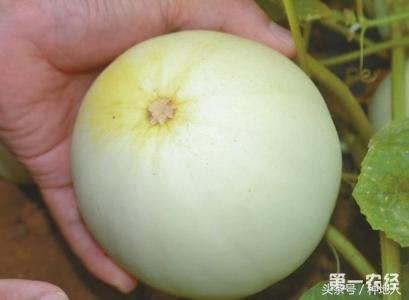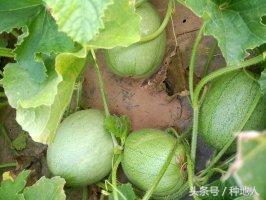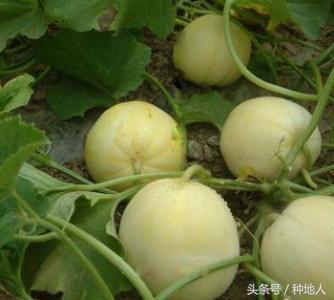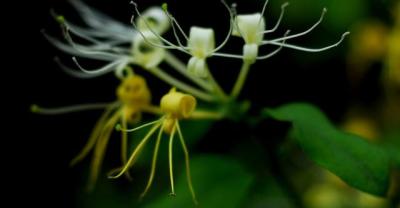Open-air muskmelon planting techniques
Cantaloupe (Cucumis melo), also known as "melon", also known as "white peck melon". It is an annual trailing herb of cucumber in Cucurbitaceae, with heart-shaped or palm-shaped leaves. Five petals yellow, monoecious, female flowers are bisexual flowers containing stamens and pistils, male flowers are unisexual and only stamens. Melons are globular, oval, oval or oblate, with yellow, white, green or mixed markings. The flesh is green, white, red or orange, crisp or soft, fragrant and sweet. Sex likes high temperature, dryness and plenty of sunshine. It is native to the tropics and is widely cultivated in various parts of our country. There are many varieties. The sweet flavor produced in North China and Northwest China is strong, while the moisture produced in wet areas is light. It is one of the excellent fruits in summer. The famous Xinjiang Hami melon is a variety of melon variety var.saccharinus.

Technical answer to muskmelon planting
1. Variety selection
Varieties should be mainly early-maturing, medium-maturing and high-quality varieties, supplemented by an appropriate number of mid-and late-maturing varieties. At present, the main varieties used in greenhouse production are Elizabeth, silver honey seed, net grain incense, as well as some suitable early-maturing and medium-maturing varieties at home and abroad.
2. Cultivate strong seedlings
The main results are as follows: (1) in general, when the ground temperature in the greenhouse is more than 12 ℃, it can be planted. Muskmelon seedling period is about 1 month, so another month or so is the sowing time. Sowing and raising seedlings are often carried out in heating greenhouses and hotbeds. The sowing time of muskmelon in greenhouse in the south of China is in the first and middle of February, and if the heat preservation condition is good, the seedlings can be raised as early as January.
(2) the seeds of seed treatment and germination preparation are removed by impurity, inferior and chaff, and then treated by drying. Soak the seeds with thiophanate methyl or carbendazim 500 times 600 times for 15 minutes, remove them and wash them in clean water. Soak the seeds with 15% trisodium phosphate solution for 30 minutes to passivate the virus. Soak the seeds in 50-60 ℃ warm water, stir to 30 ℃, let them soak for 6-8 hours, remove the moisture from the seed coat, wrap the seeds in layers with a clean cloth, and place them in a constant temperature of 30-32 ℃ (germination can be carried out in a thermostat, or in an electric blanket, fermented dung pile, or in a warm water bucket in a boiler room. The radicle is exposed in 24 hours and 30 hours, and the seeds can be sown.
(3) Nutrition production and sowing nutrition bowls can be made by ourselves or purchased with different specifications of plastic nutrition bowls. The size of the nutrition bowl can be 10 cm × 10 cm or 8 cm × 8 cm or 8 cm × 10 cm, with a minimum of not less than 6 cm × 6 cm. The purpose of preparing nutritious soil is to meet the needs of soil mineral nutrition, water and air for the growth and development of muskmelon seedlings. Nutritious soil should be loose and breathable, not easy to break, strong water and fertility conservation, rich in all kinds of nutrients, free from diseases and insect pests.
Nutritious soil is made of field soil, garden soil, river mud, furnace ash and all kinds of livestock manure and human manure, which have not been planted with melon crops. All manure must be fully rotten. The preparation ratio is 5 parts of field soil, 4 parts of rotten manure and 1 part of river mud or sand. Add 0.5 kg of urea, 1.5 kg of superphosphate, 0.5 kg of potassium sulfate or 1.5 kg of nitrogen, phosphorus and potassium compound fertilizer per cubic meter of nutritious soil. The nutritious soil is sifted before mixing, and then evenly mixed. The seedlings raised with squares can be laid into the seedling bed, while those raised with paper tubes and nutrition bowls can be packed into paper cylinders or nutrition bowls and arranged in the seedling bed tightly. This work should be completed a few days before sowing to ensure that there is sufficient time to water and roast the bed before sowing.
The nutrition bowl of the nursery bed is sprayed with water once with a spray can, and the seeds can be sown after drying for 4 hours or 6 hours. Put 1 sprouting seed in each nutrition bowl and cover the soil 1 cm 1.5 cm after sowing. Then cover the plastic film to keep the bed soil moist and increase the temperature of the nutrition bowl. Remove the plastic film immediately when the seedlings are unearthed so that the seedlings can be unearthed.
(4) the nursery bed management is centered on mastering the temperature, and it should be airtight and unventilated before emergence, and the bed temperature should be kept at 30: 35 ℃ at this time. Once the young buds are unearthed, proper attention should be paid to ventilation and ventilation, because the Hypocotyl grows fastest during this period from the unearthed seedlings to the flat cotyledons, which is the easiest stage for seedlings to grow, so we should pay special attention to controlling the excessive growth of muskmelon seedlings, and there are three measures: first, the bed temperature should be reduced to 15: 22 ℃; second, the light time should be prolonged as far as possible to ensure the normal development of seedlings. Third, reduce the air and soil moisture in the bed. The air relative humidity is 50% 60% during the day and 70% 80% at night. When the true leaves appear, the seedlings are not easy to grow, so the bed temperature should be raised to 25: 30 ℃ again. After two true leaves of the seedlings, the bed temperature should be lowered, watering should be controlled, and exercise should be carried out before planting. In addition, practice has proved that raising seedlings with large temperature difference between day and night is an effective measure to cultivate strong seedlings. When the true leaves of the seedlings appear, the temperature in the bed during the day is about 30 ℃, and the lowest temperature at night is about 15 ℃, which is beneficial to the growth of roots and the cultivation of strong seedlings.

3. Colonization
The main results are as follows: (1) when the seedlings grow to two true leaves, the seedling height is about 10 cm, the leaves are hypertrophic and the leaves are dark green, they can be planted in the greenhouse. The planting period in the greenhouse is closely related to the ground temperature in the greenhouse at that time, so the planting period is different in different places. The middle and lower reaches of the Yangtze River are available in the first and middle of March. The temperature is relatively low when planting in the greenhouse, so the greenhouse should be fastened 10-15 days before planting in order to increase the temperature in the greenhouse.
(2) density of land preparation and planting
The soil in the greenhouse was turned deeply in time after the former crop was harvested, and the base fertilizer was mainly organic fertilizer, with 3500-4000 kg per mu and 30 kg potassium sulfate compound fertilizer. The soil was first spread with 2 ploughs and 3 ploughs, and then leveled. The border with a height of 20cm and a width of 80 cm was made according to the 1.4m border distance (a turtle back type high border), and the remaining 1ram 3 base fertilizer was applied at the bottom of the border. Pour the bottom water once, dry it and cover it with plastic film. In order to facilitate daylighting, the north-south direction of the greenhouse is in the direction of the shed, and the east-west direction of the greenhouse is across the shed. Before planting seedlings, break the membrane and punch holes in the middle of the high ridge with a bowl maker at a certain distance, plant the seedlings into the hole, single vine pruning, two rows per row, double vine pruning can plant one row. The density of standing cultivation in greenhouse is as follows: single vine pruning, large fruit type varieties (such as silver honey seed) 1500 ~ 1800 plants / mu, small fruit type varieties (such as Elizabeth) 1800 ~ 2000 plants / mu, double vine pruning about 1000 ~ 1200 plants / mu.
After the row spacing was determined (an average of 0.7 meters), the plant spacing was adjusted according to the density when planting.
Usually, plastic film can only be covered on the high border of the greenhouse, but sometimes a small shed is also added in the short term after planting to facilitate heat preservation, promote slow seedlings and promote the rapid growth of seedlings.
(4) in order to adapt to the characteristics of close planting of muskmelon in greenhouse, stand cultivation is often used in order to make full use of the space in the greenhouse and strive for light energy better. Bamboo poles or sticks and nylon ropes are often used as framing materials. The frame type is one-sided vertical frame, which is suitable for close planting, good ventilation and light transmission, and convenient operation. The height of the frame is about 1.7 meters, and the height of the roof is 2.2 to 2.5 meters, so that the upper end of the stand should leave a space of more than 0.5 meters from the roof, which is conducive to air flow, reduce humidity and reduce diseases.

4. Field management
The main results are as follows: (1) the most suitable temperature for growth and development of muskmelon in the whole growth period is 25-30 ℃, but the temperature requirements are different in different growth and development stages. After planting, the temperature in the greenhouse was kept at 2730 ℃ in the daytime, no less than 20 ℃ at night, and the ground temperature was about 27 ℃. Pay attention to ventilation and cooling after slowing down the seedlings. During the vegetative growth period before flowering, the temperature was 25: 30 ℃ in daytime, not less than 15 ℃ at night, and the ground temperature was about 25 ℃. The flowering period is 27: 30 ℃ in daytime and 15: 18 ℃ at night. During the fruit expansion period, the fruit kept 27: 30 ℃ in daytime and 15: 20 ℃ at night. The mature stage is 28: 30 ℃ in daytime, no less than 15 ℃ at night, and the ground temperature is 20: 23 ℃. The temperature difference between day and night during vegetative growth period requires 10: 13 ℃, and 15 ℃ after fruit setting. Too high temperature at night is easy to grow, which is disadvantageous to sugar accumulation and affects the quality.
The air relative humidity suitable for melon growth is 50%-60%. In the greenhouse, 60% during the day and 70% to 80% at night can also make melons grow normally. The seedling stage and vegetative growth stage have strong adaptability to higher and lower air humidity, but after flowering and fruit setting, especially in the expanding stage, they are sensitive to air humidity, mainly in the middle and later stage of plant growth, which will delay the flowering stage. causing excessive growth of stems and leaves, as well as the occurrence of diseases. When there is a contradiction between temperature and humidity in the shed, it is mainly to reduce the humidity.
The measures to reduce the humidity in the greenhouse: the first is ventilation, the temperature outside the shed is low and unstable in the early growth stage, and it is better to be ventilated in the middle of the greenhouse; in the later stage, the air temperature is higher, which is mainly ventilated at both ends and both sides of the greenhouse, and the central vent can be closed in rainy days. In the middle and later stages of melon growth, a first-class wind is required in the greenhouse. The second is to control watering: more irrigation, large evaporation, it is very easy to cause excessive humidity in the shed, so it is necessary to reduce the number of irrigation as far as possible and control the amount of irrigation.
(2) the soil moisture of water and fertilizer management should not be less than 48% during the whole growing period, but the water requirement varies with different stages of development. After planting, melon seedlings need less water and leaf evaporation is less, so watering should be controlled to promote root expansion; proper topdressing and watering can be applied during vine extension; watering should be strictly controlled before and after flowering. When young melons grow to the size of eggs and begin to enter the expanding stage, water supply should be adequate. Less water is needed in the mature period. In the melon expansion period combined with watering, 10 kg of potassium sulfate can be applied per mu. Usually muskmelon in greenhouse can be watered once with vine water and twice with expanded melon water. Pay attention to the amount of water when pouring watermelon should not be too large, so as not to cause disease.
(3) pruning
In order to make muskmelon bear fruit in the most ideal position and make the fruiting period consistent, coring and pruning are the necessary means in cultivation. Muskmelon in greenhouse is often pruned by single vine. A small amount is also pruned with double vines.
Single vine fruit pruning method: this method has the advantages of simple operation, convenient management, early maturity and concentrated results, but the yield is slightly lower. The specific method is as follows: the heart of the main vine is not removed at first, and the heart is not removed until 25-30 leaves, and all the sub-vines at the 1st-10th nodes at the base of the main vine are removed.
- Prev

Cultivation method of potted wolfberry
Lycium barbarum is a perennial woody plant that can be used for soup and soaking water. It has the effect of strengthening immunity, soothing liver and improving eyesight. Its leaves can also cook, taste...
- Next

You are told to plant dragon fruit by hand.
First of all, prepare a dragon fruit wrapped in gauze or thin cloth, the purpose is to separate the flesh from the planting of the preliminary processed dragon fruit seeds, repeatedly.
Related
- Fuxing push coffee new agricultural production and marketing class: lack of small-scale processing plants
- Jujube rice field leisure farm deep ploughing Yilan for five years to create a space for organic food and play
- Nongyu Farm-A trial of organic papaya for brave women with advanced technology
- Four points for attention in the prevention and control of diseases and insect pests of edible fungi
- How to add nutrient solution to Edible Fungi
- Is there any good way to control edible fungus mites?
- Open Inoculation Technology of Edible Fungi
- Is there any clever way to use fertilizer for edible fungus in winter?
- What agents are used to kill the pathogens of edible fungi in the mushroom shed?
- Rapid drying of Edible Fungi

